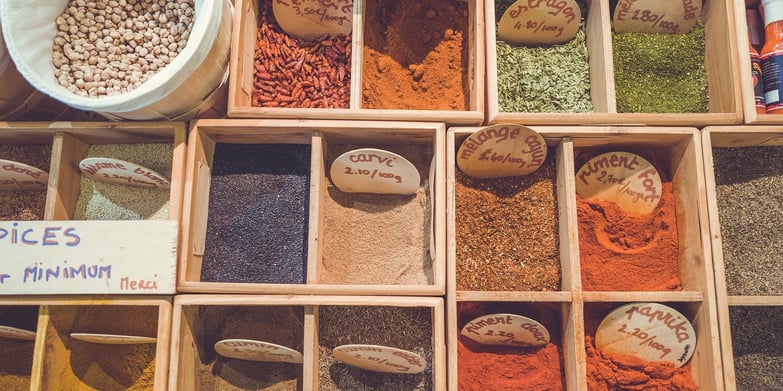
Over the past few years, with the popularity of cooking shows, there has been an increasing trend of people experimenting more with flavors. One way that people experiment in the kitchen is through the use of spices and herbs. Considering the International Organization for Standardization (ISO) identifies over 100 varieties of herbs and spices, there are many different options for flavor combinations.
Spices and herbs have been traded throughout the world for use in food seasoning and coloring for thousands of years. Traditionally, spices were processed and dried by being laid in the sun to dry. Since then, much more stringent standards have been established. These standards ensure that the final product is unadulterated and meets health and safety standards. These standards are set by several governing bodies, such as the American Spice Trade Association (ASTA) and the European Spice Association (ESA). According to both of these regulatory agencies, moisture content is an important parameter to measure.
Monitoring moisture content in spices helps to prevent mold, bacteria, and yeast growth. Moisture content can also be monitored over time to assess storage conditions. The packaging in which the spices are stored will directly affect moisture uptake. For example, a package made out of paper might be sufficient in a dry environment, while spices in a humid environment may require additional protection. Based on the moisture content of the spices, adjustments to packaging materials or the environment in which spices are manufactured can be made as needed.
A global spice importer, processor, and purveyor contacted Hanna about aiding in their quality control process. This customer had been sending samples out for moisture analysis and wanted to bring the analysis into their on-site quality assurance lab. Hanna helped the customer to develop an extraction method for a variety of spices that would be run on the Karl Fischer Volumetric Titrator HI903. It was determined that an extraction in methanol would effectively release the moisture in all of the spices being analyzed. Due to the variety of spices being run on the HI903, an overnight extraction was suggested to ensure all spices had ample time release their water; this allowed the same procedure to be used for all samples, which increased the confidence that all extractions would be carried out correctly.

The customer appreciated that the external extraction parameters could be entered directly into the titrator and the calculation is automatically performed. This saved them valuable time and reduced any errors from performing a manual calculation. The USB port of the HI903 allowed for easy transfer of the results by using a common flash drive. The customer also appreciated the sealed solvent exchange system that allows the solvent in the titration cell to be exchanged without opening the cell. This system uses an air pump to add and remove solvent without exposing the cell to atmospheric moisture. With the help of Hanna Instruments’ Applications Team and the features of the HI903 Karl Fischer, this customer was able to bring moisture analysis into their QA lab.
That's why we've dedicated our blog as a helpful resource for you to use! Catch up on the latest products, explore industry trends, discover testing tips, learn how to improve results, and more. Got questions? Email sales@hannainst.com.

